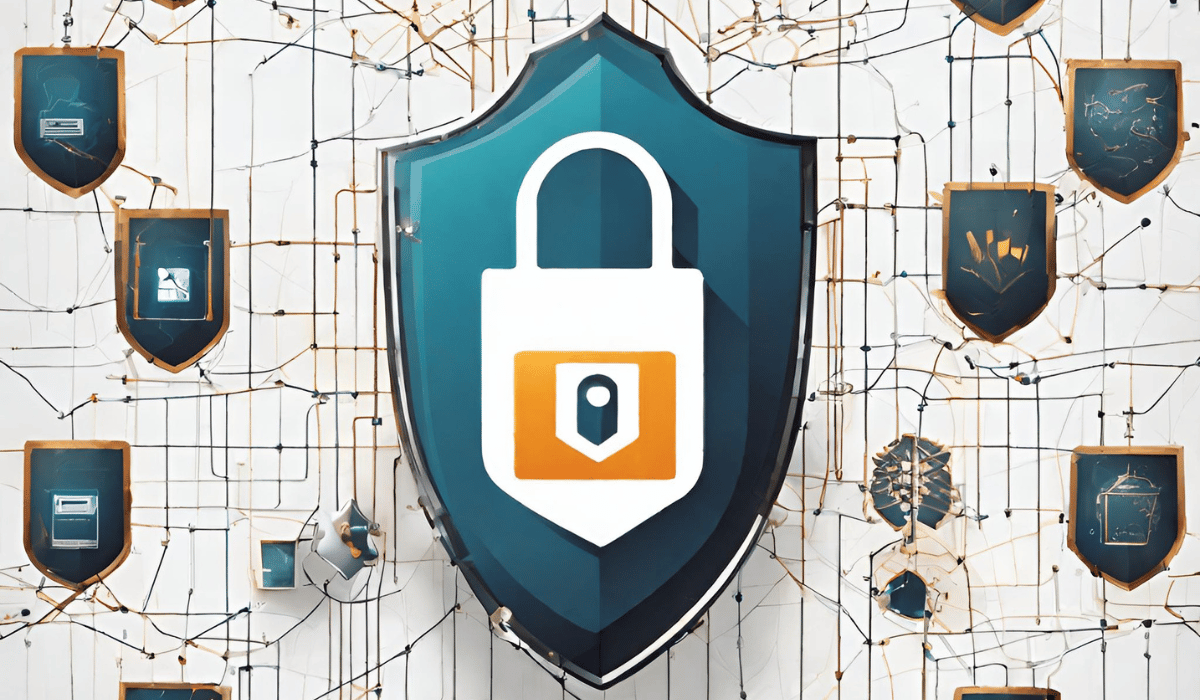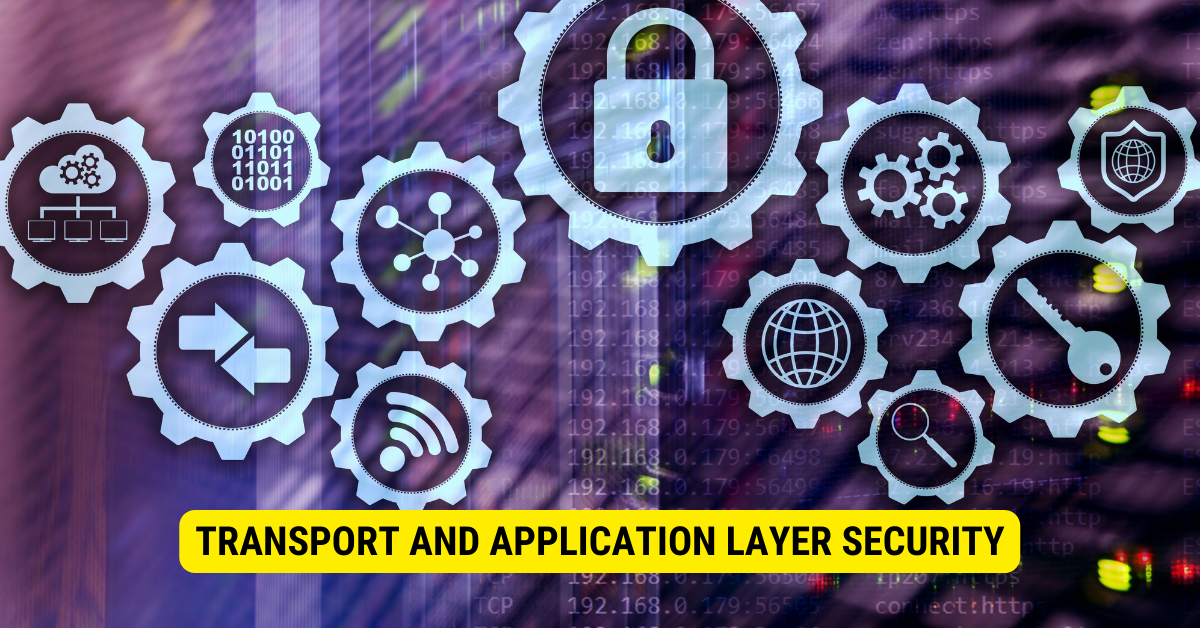In today’s data-driven world, the importance of network security cannot be overstated. As our reliance on interconnected devices and digital communication grows, so does the need to protect sensitive information from malicious hackers and cyberattacks. Data networks serve as the backbone of the internet, carrying valuable data from personal shopping habits to critical financial transactions. However, during its transit, this data is susceptible to corruption and unauthorized access.
This comprehensive guide will explore various aspects of network security, providing valuable insights, expert advice, and actionable tips to add robust security to your data network. From understanding the basics of network security to exploring different types of security measures and tools, we’ve got you covered.
Understanding Network Security
Defining Network Security

Network security is a crucial set of technologies that protect the integrity and usability of an organization’s infrastructure. It prevents unauthorized access and ensures the confidentiality of data during its transmission. Network security employs multiple lines of defense, each enforcing security policies to safeguard the data and the network.
Importance of Network Security
Network security is the foundation of cybersecurity, as it shields organizations from potential cyber threats and attacks. Every entity handling significant data, from small businesses to large enterprises, requires robust network security to protect against data loss, theft, and sabotage. It also ensures the security of shared data over the network, dividing and encrypting information to prevent eavesdropping and man-in-the-middle attacks.
Primary Goals Of Network Security
The primary goals of network security are to ensure the confidentiality, integrity, and availability of data and network resources. This involves protecting sensitive information from unauthorized access, preventing data tampering, and ensuring that authorized users have continuous access to the network.
Layers of Defense
Effective network security operates on multiple layers of defense, aiming to cover various aspects of network protection. By implementing physical, technical, and administrative security measures, organizations fortify their networks against external and internal threats. From securing physical access to data centers to managing user behavior and authorization, these layers work together to create a comprehensive security framework.
Working on Network Security
Authentication and Authorization
Network security revolves around two fundamental processes: authentication and authorization. Authentication verifies the identity of users trying to access the network, ensuring only legitimate users gain entry. This prevents unauthorized intrusions and secures the network against potential threats.
Identifying Vulnerabilities
With the threat landscape constantly evolving, network security must be vigilant in identifying vulnerabilities. Whether they exist in devices, data, applications, or user behaviors, early detection, and proactive mitigation are essential to safeguarding the network against potential exploits.
Different Types of Network Security
Physical security
The first line of defense, physical security, focuses on protecting data and the network from unauthorized access. Measures such as biometric systems and controlled access to routers and peripherals ensure that only authorized personnel can access the network. Physical security is especially crucial for smaller businesses with limited resources for dedicated security personnel.
Technical Security
Technical security centers on safeguarding data during transmission and storage. It defends unauthorized users and malicious actions, providing essential protection for data at rest and in transit.
Administrative Security
Administrative security manages user behavior and the entire authorization process. Administrative security ensures the network remains protected from potential threats by determining the level of access granted to different network users based on their roles. It also recommends necessary infrastructure amendments to enhance security.
Transport and Application Layer Security

TLS: Secure Data Transmission
Transport Layer Security (TLS) is a vital component of network security, securing information as it travels over the internet. TLS ensures data confidentiality, integrity, and authentication by creating private and secure connections through cryptographic handshakes.
Application Layer Protection
The application layer is the closest to end-users and, therefore, a target for potential attacks. Robust application layer security protects against distributed denial of service attacks, HTTP floods, cross-site scripting, and other threats. Web application firewalls and secure web gateway services are employed to combat these dangers.
Implementing Effective Network Security: Best Practices and Tips
Now that we have explored the fundamental concepts and tools of network security let’s delve into some best practices and tips to enhance your network security:
Regular Software Updates and Patch Management
- Keeping all software and systems up-to-date is crucial to patch known vulnerabilities.
- Implement a robust patch management system to ensure timely updates.
Strong Password Policies and Multi-Factor Authentication (MFA)
- Enforce strong password policies, requiring complex and regularly changed passwords.
- Implement MFA to add an extra layer of security for user authentication.
Network Segmentation and Access Control
- Divide your network into segments to limit the impact of a potential breach.
- Apply strict access control policies to restrict access to sensitive data.
Employee Training and Cybersecurity Awareness

- Educate employees about potential cyber threats, such as phishing and social engineering.
- Encourage a cybersecurity-aware culture within the organization.
Data Encryption and Data Loss Prevention (DLP)
- Encrypt sensitive data to protect it from unauthorized access during transit and storage.
- Implement DLP measures to prevent data leaks and unauthorized sharing.
Regular Network Monitoring and Incident Response
- Continuously monitor network activities for any signs of suspicious behavior.
- Have a robust incident response plan in place to address security breaches promptly
Key Tools in Network Security

Firewalls: The First Line of Defense
Firewalls act as network security’s initial defense, monitoring and regulating incoming and outgoing traffic. By creating a barrier between internal and external networks, firewalls protect against unauthorized access and potential cyber threats from the internet.
VPNs: Secure Connections
Virtual Private Networks (VPNs) establish encrypted connections over the internet, ensuring secure data transmission between devices and networks. They play a crucial role in enabling secure remote work for users in corporate and personal networks.
IPS: Intrusion Prevention Systems
Intrusion Prevention Systems (IPS) continuously scan the network for harmful activities and respond proactively to detected threats. By reporting, blocking, or discarding malicious activity, IPS provides a more sophisticated approach to network security than intrusion detection systems (IDS).
Behavioral Analytics: Leveraging Data for Security
Behavioral analytics analyze historical data to detect patterns of suspicious behavior. When similar attack patterns are identified, administrators can take preventive measures and further enhance network security.
Benefits of Network Security
- Protection Against External Threats Network security shields organizations from various cyber attackers, from industrial spies to hacktivists and cybercriminals. A strong cybersecurity posture and routine software updates help identify and respond to evolving attack techniques effectively.
- Defense Against Internal Threats Insider threats from current or former employees, vendors, or trusted partners pose a significant risk. By proactively monitoring networks and managing access, internal threats can be detected and mitigated before causing major disruptions.
- Increased Productivity Network security plays a crucial role in maintaining employee productivity. By minimizing downtime caused by cyber-attacks, organizations can ensure seamless operations and uninterrupted access to resources and services.
- Brand Trust and Reputation A robust network security stance fosters brand loyalty and customer trust. It also enables organizations to become trusted partners within the supply chain, opening doors to potential growth and development.
Challenges In Implementing Network Security
Implementing network security is a critical task for any organization, but it comes with its fair share of challenges. Addressing these challenges is essential to ensure the protection of sensitive data and the overall integrity of the network. Here are some common challenges that organizations may face when implementing network security:
- Complexity of Network Infrastructure: Modern networks are often complex and interconnected, comprising numerous devices, servers, and endpoints. Securing such intricate infrastructures requires a comprehensive approach that covers all potential entry points, which can be challenging to manage effectively.
- Resource Constraints: Many organizations, especially small and medium-sized businesses, may face resource limitations when it comes to investing in robust network security solutions. Budget constraints might restrict the acquisition of advanced security tools and hiring dedicated security personnel, making it difficult to implement an optimal security strategy.
- Constantly Evolving Threat Landscape: Cyber threats are continually evolving, with hackers developing new techniques and attack vectors. Staying ahead of these ever-changing threats and promptly implementing necessary security updates and patches can be a challenging and resource-intensive task.
- Balancing Security and User Convenience: Striking the right balance between strong security measures and user convenience is often a delicate challenge. Overly restrictive security policies may impede productivity and frustrate users, leading them to find workarounds that can compromise security.
- Lack of Cybersecurity Awareness: Human error is a significant cause of security breaches. Without proper cybersecurity training and awareness programs, employees may inadvertently fall victim to phishing scams, social engineering attacks, or other cyber threats, potentially leading to data breaches.
- Mobile and Remote Workforce Security: The increasing trend of remote work and the use of personal devices for work purposes present additional challenges for network security. Ensuring the security of remote connections, mobile devices, and remote employees’ practices can be complex and demanding.
- Vendor and Third-Party Risks: Organizations often rely on third-party vendors for various services, and these vendors may have access to sensitive data or network resources. Managing the security risks associated with third-party vendors and ensuring their compliance with security standards can be challenging.
- Legacy Systems and Software: Outdated or unsupported legacy systems and software may have unpatched vulnerabilities, making them attractive targets for cyber attackers. Securing and updating these systems while maintaining their functionality can be a daunting task.
- Encryption and Decryption Overhead: While encryption is vital for securing data, it can introduce additional overhead, leading to slower network performance. Finding the right balance between strong encryption and network speed is essential for optimizing security and user experience.
- Compliance with Data Protection Regulations: Depending on the industry and geographical location, organizations must comply with various data protection and privacy regulations. Ensuring that network security measures align with these regulations can be a complex and ongoing process.
FAQs:
Q: How can network security help in safeguarding against insider threats?
A: Network security employs various techniques, such as user behavior monitoring and access control, to detect and mitigate insider threats. By closely monitoring user activities and limiting access to sensitive data, network security can identify suspicious behavior and prevent potential data breaches from within the organization.
Q: What role does encryption play in network security?
A: Encryption is a crucial component of network security, especially in protecting data during transmission and storage. It converts plain text data into ciphertext using cryptographic algorithms, making it unreadable to unauthorized parties. Properly encrypted data ensures that even if intercepted, it remains secure and protected from eavesdropping.
Q: How can network security contribute to business continuity?
A: Network security ensures that critical network resources and data remain available even in the face of cyber threats or attacks. By proactively monitoring network activities and having robust incident response plans in place, organizations can swiftly detect and mitigate security breaches, minimizing downtime and ensuring continuous business operations.
Q: How does network security contribute to building trust with customers?
A: Network security is vital in building trust with customers, as it demonstrates an organization’s commitment to protecting their sensitive information. When customers feel confident that their data is safe and secure, they are more likely to establish long-term relationships with the business, leading to increased brand loyalty and customer satisfaction.
Q: Can network security help in compliance with data protection regulations?
A: Yes, network security plays a significant role in ensuring compliance with data protection regulations. Many data protection laws require organizations to implement adequate security measures to protect customer data and ensure privacy. By adhering to network security best practices, organizations can meet these regulatory requirements and avoid potential legal consequences.
Conclusion
In the data-driven networks age, network security is a critical pillar of cybersecurity. Its role in protecting data, ensuring secure communication, and safeguarding against potential threats cannot be overstated. By embracing comprehensive mechanisms and protocols, organizations can achieve the essential goals of confidentiality, integrity, and availability, making network security an indispensable aspect of modern cybersecurity practices.
